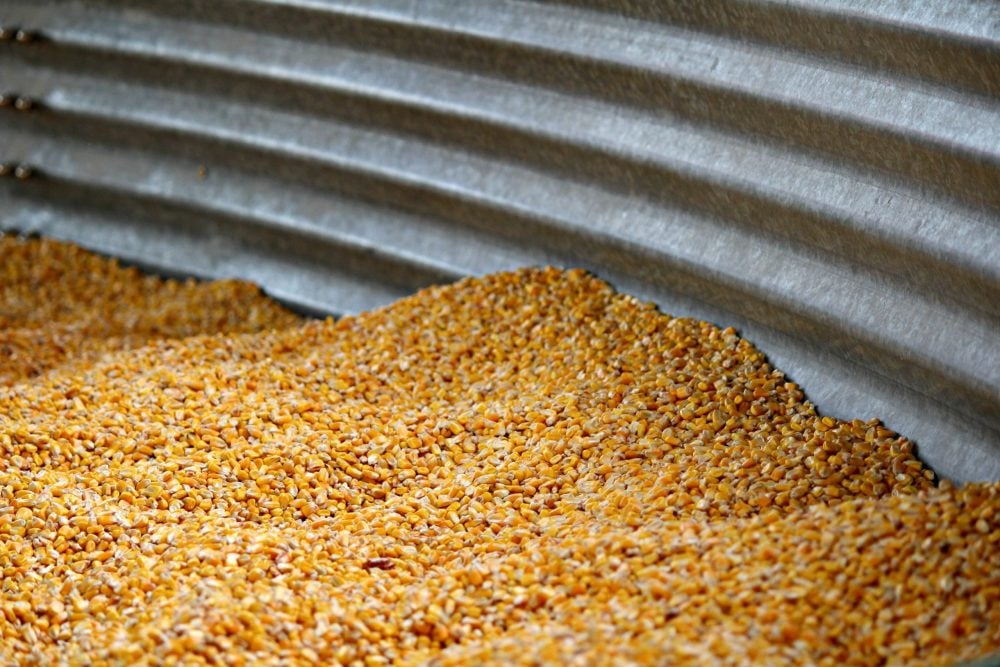Ontario corn and soybean prices are relatively unchanged from two weeks ago. However, winter wheat prices are down about 30 cents per bushel for old crop positions and 25 cents per bushel for new crop.
Adverse logistical issues in the United States Gulf region have resulted in stronger wheat basis levels. While the wheat futures are functioning to encourage demand, the stronger U.S. basis has tempered additional export business.
Export values in Europe and Russia are down US$10 per tonne to US$12 per tonne in an effort to move old crop stocks before harvest.
Read Also

Cycle swings dictate farming profitability
It can be profitable to understand where the crop markets are positioned in the context of their big-picture cycles.
U.S. President Donald Trump’s tweets have been optimistic in regards to ongoing trade talks with China. Several news outlets report that there are many structural issues that still need to be worked out.
The soybean and corn futures have shrugged off the positive sentiment given the burdensome U.S. and world fundamentals.
Quick look:
Soybeans: Soybean carryout for the 2019-2020 season is expected to be lower than the record of 2018-2019.
Corn: Larger corn production is expected in the U.S. in 2019, resulting in a large carryout.
Wheat: The Chicago and Kansas City wheat futures have moved in line with the world wheat market.
Soybeans
The recent U.S. Department of Agriculture outlook conference was considered neutral to slightly bearish for the soybean market.
U.S. farmers are expected to plant 85 million acres of soybeans this spring, down 4.2 per cent or 4.8 million acres from last year. Production was estimated at 4.175 billion bushels, down from the 2018 output of 4.544 billion bushels. A minor year-over-year increase was noted in domestic demand while exports were raised by 50 million bushels over 2018-19.
The 2019-20 carryout was estimated at 845 million bushels, which is down from the record-ending stocks projection for 2018-19 of 910 million bushels. The view on the U.S. soybean market hasn’t changed despite the lower ending stocks projection. Traders believe lower prices are needed to induce a sharper year-over-year decline in acreage. U.S. soybean supplies will be record high at the start of the crop year due to the large carry-in stocks from 2018-19.
Brazilian farmers have harvested about 40 per cent of the soybean crop. Yields are coming in as expected so there is no change in the production estimates.
The Argentinian soybean crop is rated 46 per cent good to excellent compared to only 5.3 per cent last year. South American soybean production will exceed year-ago output by approximately 14 million tonnes.
Brazilian soybeans continue to trade at a discount to U.S. soybeans into China. While state-owned enterprises may have bought U.S. soybeans, the private trade continues to focus on South American origin.
Argentina has been the largest market for U.S. soybeans this crop year. U.S. exports to Argentina will end in April as their supplies come on the market. Domestic and export demand for U.S. soymeal has sustained U.S. soybean prices. Argentina is typically the world’s largest soymeal exporter and they will regain this position later in April. U.S. soymeal prices will weaken, causing the domestic crush margin to deteriorate.
What to do: We’ve been aggressive on soybean sales. Producers have been advised to 80 per cent to 90 per cent of their old crop supplies and 20 per cent to 30 per cent of expected new crop production.
Later in spring, we expect to see larger imports of U.S. soybeans into Ontario. Soybean exports out of the lakes will also slow due to strong competition from the U.S. and South America.
Corn
Brazil’s first crop corn harvest is 35 per cent complete while farmers have seeded about 60 per cent of the second, or safrinha, corn crop.
Argentina’s corn crop is rated 56 per cent good to excellent up from 20 per cent last year; harvest will move into full swing during March. There are no changes to South American production estimates from our previous report.
Traders paid little attention to the numbers from the USDA outlook conference. U.S.-seeded area was projected at 92 million acres, which is up 2.9 million acres from 2018. Production was estimated at 14.9 billion bushels, up from the 2018 crop of 14.4 billion bushels.
We still believe that U.S. acreage could reach 94 million acres, which would match the 2016 seeded area.
U.S. exports for 2019-20 were projected to increase 25 million bushels from 2018-19. The USDA had a 2019-20 carryout of 1.65 billion bushels, down from the 2018-19 ending stocks of 1.735 billion bushels.
We wouldn’t be surprised to see the U.S. carryout finish above two billion bushels. Compared to the USDA numbers, we’re looking for larger production and lower exports, which results in a higher carryout for 2019-20.
Ontario and U.S. corn values have held up due to the year-over-year increase in export demand. Last year Argentina experienced drought conditions but the crop is in good shape this year.
Brazil’s safrinha corn crop will move through pollination in April, which is the critical period for yield development. Once the safrinha harvest begins in May, world corn prices will come under pressure. Barring adverse weather in Brazil, we’re looking for lower corn prices later in spring.
Many farmers in Ontario are still undecided with their cropping decisions because of the high level of vomitoxin in the 2018 crop. While export prices come under pressure during June, the futures market will be sensitive to acreage and North American crop development.
The U.S. Midwest is saturated. Ontario has received above normal precipitation. We anticipate seeding will be delayed. This usually translates into below trend yields because the corn crop moves through pollination during the heat of summer.
What to do: We feel comfortable with our year-to-date sale recommendations. Given the current risks in the market, we believe Ontario producers should be 60 per cent sold on old crop corn and 20 per cent sold on new crop.
Wheat
Every once in a while, we have to eat our words. This is one of those times because the wheat market behaved totally opposite to our ideas in the previous issue. The future market spreads reflected the U.S fundamentals, while the futures themselves were price discovery for the world situation. Let me explain.
First, we’ve seen the basis in the U.S. Gulf strengthen by 20 cents per bushel for hard and soft red winter wheat. U.S. supplies in the Gulf are tight, which has kept the Chicago March-May futures spread rather narrow.
On the flip side, the Chicago and Kansas City wheat futures have moved in line with the world wheat market. Russian offers were too high on previous Egyptian tenders and the pipeline became backlogged due to limited exports. Russia still has a couple million tonnes of wheat to move prior to the upcoming harvest and current conditions reflect a minor year-over-year increase in production for 2019.
In Europe, French exports have been lagging year-ago levels. Strong domestic feed prices in Northern Europe due to last year’s drought limited offshore movement.
During the past two weeks, we’ve seen the European feed grain complex collapse and French wheat is now competitive on the world market. Moisture levels have been replenished in Germany due to above normal precipitation; France’s winter wheat crop is in good shape. European wheat production is expected to be up four per cent to six per cent over year-ago levels.
U.S. farmers have sold very little new crop winter wheat and remember, they sell 50 per cent during the summer months. The Kansas winter wheat crop was rated 51 per cent good to excellent. Despite the lower seeded acreage, U.S. hard red winter wheat production will come in above last year.
What to do: This week, we’re advising farmers to sell 20 per cent of their 2018 crop bringing total sales to 60 per cent. The market didn’t rally as expected; however, we expect further downside as the Northern Hemisphere winter wheat harvest approaches.















